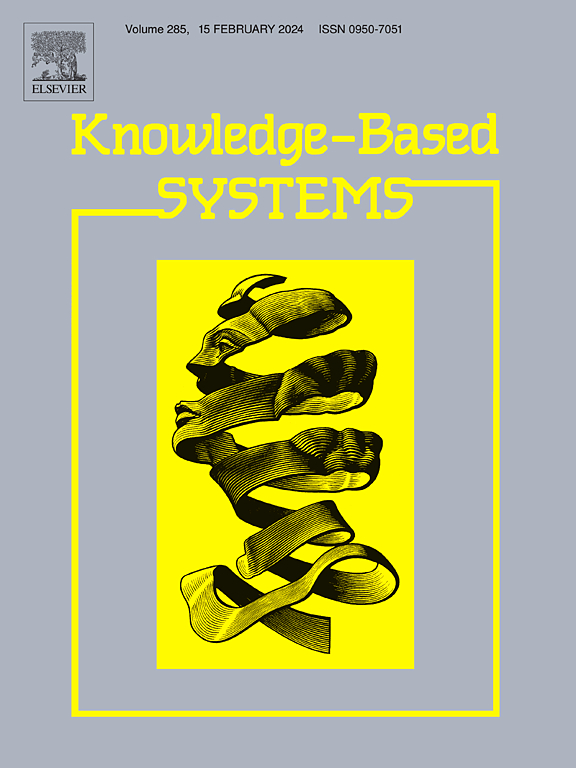Multi-view representation learning with dual-label collaborative guidance
IF 7.2
1区 计算机科学
Q1 COMPUTER SCIENCE, ARTIFICIAL INTELLIGENCE
引用次数: 0
Abstract
Multi-view Representation Learning (MRL) has recently attracted widespread attention because it can integrate information from diverse data sources to achieve better performance. However, existing MRL methods still have two issues: (1) They typically perform various consistency objectives within the feature space, which might discard complementary information contained in each view. (2) Some methods only focus on handling inter-view relationships while ignoring inter-sample relationships that are also valuable for downstream tasks. To address these issues, we propose a novel Multi-view representation learning method with Dual-label Collaborative Guidance (MDCG). Specifically, we fully excavate and utilize valuable semantic and graph information hidden in multi-view data to collaboratively guide the learning process of MRL. By learning consistent semantic labels from distinct views, our method enhances intrinsic connections across views while preserving view-specific information, which contributes to learning the consistent and complementary unified representation. Moreover, we integrate similarity matrices of multiple views to construct graph labels that indicate inter-sample relationships. With the idea of self-supervised contrastive learning, graph structure information implied in graph labels is effectively captured by the unified representation, thus enhancing its discriminability. Extensive experiments on diverse real-world datasets demonstrate the effectiveness and superiority of MDCG compared with nine state-of-the-art methods. Our code will be available at https://github.com/Bin1Chen/MDCG.
多视角表征学习与双标签协同引导
多视图表征学习(Multi-view Representation Learning,MRL)最近引起了广泛关注,因为它可以整合来自不同数据源的信息,从而获得更好的性能。然而,现有的 MRL 方法仍然存在两个问题:(1)它们通常在特征空间内执行各种一致性目标,这可能会丢弃每个视图中包含的互补信息。(2)有些方法只关注处理视图间的关系,而忽略了对下游任务同样有价值的样本间关系。为了解决这些问题,我们提出了一种新颖的多视图表示学习方法--双标签协同引导(MDCG)。具体来说,我们充分挖掘和利用隐藏在多视图数据中的有价值的语义和图信息,以协同指导多视图表示学习过程。通过从不同视图中学习一致的语义标签,我们的方法增强了视图间的内在联系,同时保留了视图的特定信息,这有助于学习一致且互补的统一表征。此外,我们还整合了多个视图的相似性矩阵,以构建表示样本间关系的图标签。在自监督对比学习的理念下,统一表示法能有效捕捉图标签中隐含的图结构信息,从而提高其辨别能力。在各种实际数据集上进行的广泛实验证明,与九种最先进的方法相比,MDCG 是有效和优越的。我们的代码将发布在 https://github.com/Bin1Chen/MDCG 网站上。
本文章由计算机程序翻译,如有差异,请以英文原文为准。
求助全文
约1分钟内获得全文
求助全文
来源期刊

Knowledge-Based Systems
工程技术-计算机:人工智能
CiteScore
14.80
自引率
12.50%
发文量
1245
审稿时长
7.8 months
期刊介绍:
Knowledge-Based Systems, an international and interdisciplinary journal in artificial intelligence, publishes original, innovative, and creative research results in the field. It focuses on knowledge-based and other artificial intelligence techniques-based systems. The journal aims to support human prediction and decision-making through data science and computation techniques, provide a balanced coverage of theory and practical study, and encourage the development and implementation of knowledge-based intelligence models, methods, systems, and software tools. Applications in business, government, education, engineering, and healthcare are emphasized.
 求助内容:
求助内容: 应助结果提醒方式:
应助结果提醒方式:


